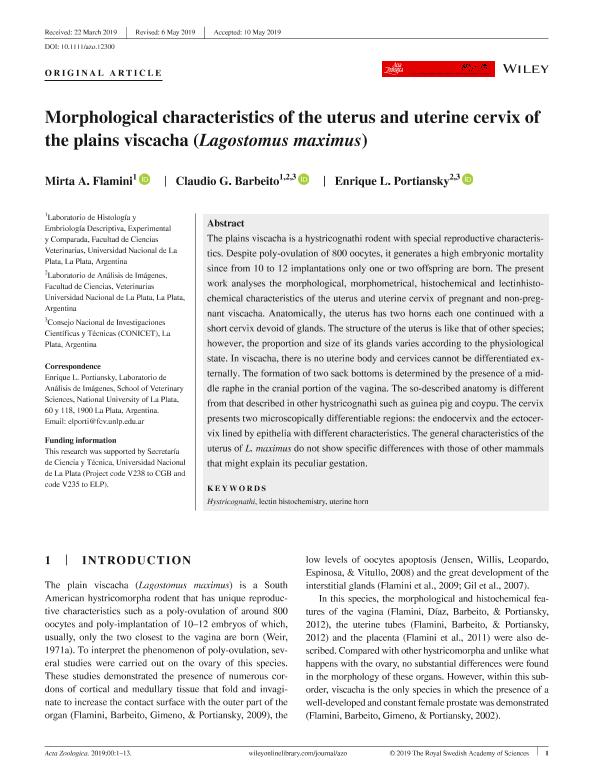Artículo
Morphological characteristics of the uterus and uterine cervix of the plains viscacha (Lagostoumus maximus)
Fecha de publicación:
05/2019
Editorial:
Wiley Blackwell Publishing, Inc
Revista:
Acta Zoologica
ISSN:
0001-7272
Idioma:
Inglés
Tipo de recurso:
Artículo publicado
Clasificación temática:
Resumen
The plains viscacha is a hystricognathi rodent with special reproductive characteristics. Despite poly‐ovulation of 800 oocytes, it generates a high embryonic mortality since from 10 to 12 implantations only one or two offspring are born. The present work analyses the morphological, morphometrical, histochemical and lectinhistochemical characteristics of the uterus and uterine cervix of pregnant and non‐pregnant viscacha. Anatomically, the uterus has two horns each one continued with a short cervix devoid of glands. The structure of the uterus is like that of other species; however, the proportion and size of its glands varies according to the physiological state. In viscacha, there is no uterine body and cervices cannot be differentiated externally. The formation of two sack bottoms is determined by the presence of a middle raphe in the cranial portion of the vagina. The so‐described anatomy is different from that described in other hystricognathi such as guinea pig and coypu. The cervix presents two microscopically differentiable regions: the endocervix and the ectocervix lined by epithelia with different characteristics. The general characteristics of the uterus of L. maximus do not show specific differences with those of other mammals that might explain its peculiar gestation.
Palabras clave:
HYSTRICOGNATHI
,
LECTIN-HISTOCHEMISTRY
,
UTERINE HORN
Archivos asociados
Licencia
Identificadores
Colecciones
Articulos(CCT - LA PLATA)
Articulos de CTRO.CIENTIFICO TECNOL.CONICET - LA PLATA
Articulos de CTRO.CIENTIFICO TECNOL.CONICET - LA PLATA
Citación
Flamini, Mirta Alicia; Barbeito, Claudio Gustavo; Portiansky, Enrique Leo; Morphological characteristics of the uterus and uterine cervix of the plains viscacha (Lagostoumus maximus); Wiley Blackwell Publishing, Inc; Acta Zoologica; 101; 4; 5-2019; 353-365
Compartir
Altmétricas




